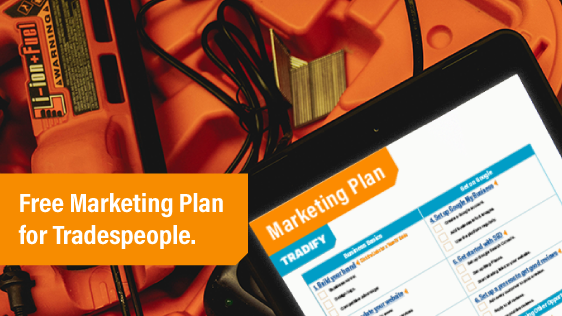DIY Payroll – 6 Common Mistakes to Avoid
by Team Tradify, May 31, 2023

Table of Contents
Growing your trade business to a point where you need to hire an extra pair of hands is an impressive milestone. However, moving from a one-man-band to a team of two (or more) comes with responsibilities you might not have had to deal with before – like payroll.
Unfortunately, paying your staff isn’t quite as simple as transferring money to their bank accounts. One of the key decisions you’ll need to make early on is whether you want to manage payroll yourself or outsource the task to an expert. If you choose to DIY, there are some common mistakes you’ll want to avoid.
Short on time? Skip ahead
- Classifying workers incorrectly
- Missing key payroll deadlines
- A breakdown of key payroll dates around the world
- Using the wrong tax rates
- Miscalculating pay
- Not leveraging technology
- Not sticking to a process
- Reduce the admin burden of payroll
1. Classifying workers incorrectly
As an employer, you’re required to deduct and pay income tax on your employees’ behalf. In the trades, it’s common to hire subcontractors (also known as independent contractors) and this is where things can get a little murky, because subbies are responsible for meeting their own tax obligations, meaning you don’t withhold any deductions from their pay.
To avoid paying fines and interest for incorrect payroll filings, it’s best to get your head around the differences between employees, contractors and subcontractors.
Have a read of the following blogs:
- Subcontractor vs Employee – What’s the Difference?
- Subcontractor vs Contractor - What's the Difference?
- Self-Employed vs Contractor – What’s the Difference?
- How To Manage Subcontractors
2. Missing key payroll deadlines
If there’s one thing you do not want to do, it’s to miss a payroll deadline, because there’s a chance it’ll cost you. While deadlines aren’t the same in each country, you’ll generally find the types of deadlines are similar.
The three you need to know about are:
- Income tax deductions. This is the tax you withhold from payments you make to employees before you pay them. You may also be required to make other deductions from your employees’ pay including student loan repayments.
- Payment summaries. These are summaries of how much you’ve paid each employee during the year.
- Super reporting. There are multiple deadlines for paying and reporting superannuation contributions.

3. A breakdown of key payroll dates around the world
UK 🇬🇧
Every month, you must pay HM Revenue and Customs (HMRC):
- The tax and National Insurance (and any other deductions) you owe as reported on your Full Payment Submission (FPS) in the previous tax month
- Minus the reductions on any Employer Payment Summary (EPS) you sent before the 19th in the current tax month
Pay what you owe by the 22nd of the month (or the 19th if paying by post) – you may have to pay a penalty if you do not. For more information, visit www.gov.uk
US 🇺🇸
There are three types of tax forms that an employer must fill out. These are:
- Form 941 – This quarterly form is used to report income taxes, social security tax and Medicare tax withheld from employees’ paychecks. It must be issued by April 30th, July 31st, October 31st, and January 31st.
- W-2 – Employers must give this form to all employees each year. It shows the employee’s total gross earnings, social security, Medicare insurance, and federal and state taxes. This must be filed by January 31st.
- W-3 – This is a compilation form because it totals all data from the employee W-2 forms. This is due to the Social Security Administration no later than January 31st.
AU 🇦🇺
Every quarter, you must pay the Australian Tax Office (ATO):
- PAYG withholding instalments: due dates 28 Oct, 28 Jan, 28 April and 28 July
- Issue PAYG withholding payment summaries to employees and other workers on 14 July.
- PAYG withholding payment summary annual report due to ATO on 14 Aug
- Super guarantee contributions are to be made to the super fund every quarter: 28 Oct, 28 Jan, 28 April and 28 July.
NZ 🇳🇿
Under the payday filing system, you’ll have to file your employees’ pay information within two working days of each payday. If you pay weekly, that means you’ll have to file the information to the IRD every week.
You’re also required to make some deductions from your employees’ pay, including income tax (PAYE), KiwiSaver, child support and student loan repayments.
You must deduct these sums before you make payments into your employees’ bank accounts and then send the deductions to Inland Revenue (IRD), either once or twice a month, depending on the size of your business.

4. Using the wrong tax rates
Tax rates can change every year (and some do!) That’s not something you want to find out at the end of the year, so keep updated with the latest payroll tax changes.
When you pay the wrong rate, you must make up the difference in owed taxes. You might also have to pay late fees, penalties or interest on the taxes you owe.
End of the tax year looming? Get prepped and file on time with our handy checklists:
- End of Tax Year Checklist for UK Tradespeople
- EOFY Checklist for Australian Tradies
- EOFY Checklist for New Zealand Tradespeople
5. Miscalculating pay
Incorrect pay can be frustrating for any employee, particularly if the error results in missed payments. Tracking your team’s time on the job is important, whether you charge a set fee or an hourly rate. You need to keep an accurate record of time spent on the tools so you can not only invoice for the correct amount, but also pay your employees accurately for their work.
Tradify’s timesheet software allows you to create and submit digital timesheets and use the live job timer to record hours. It’ll save you chasing those pesky timesheets every month, while at the same time lodging accurate employee records.
Are you charging enough? Work out your ideal hourly rate with our free Charge-Out Rate Calculator!
6. Not leveraging technology
In our latest Tradify Pulse Report, a survey of more than 600 trade business owners across Australia, New Zealand and the UK, 34% of tradespeople are still using pen and paper to get their admin done.
That translates to a massive 18.5 hours per week on average spent on business admin, a number that can be significantly reduced using cloud-based technologies. There are several payroll software providers that can integrate directly with your cloud accounting software, further streamlining the process of paying staff.
For example, our accounting partner Xero has its own solution called Xero Payroll.
Our accounting partners by region:
- Xero – available in the UK, US, AU and NZ
- Sage – available in the UK
- QuickBooks – available in the UK, US, AU and NZ
- MYOB – available in AU and NZ

7. Not sticking to a process
Payroll mistakes can create drama you can do without. The best way to avoid any slip-ups is to follow a logical process that helps you tick off all the necessary steps. Even with software to support payroll processes, there are still a lot of jobs to track. Sticking to a process will not only save time and minimise mistakes, it’ll also make things easier when you take on your next staff member.
Here are some things to consider:
- Check all employee information is updated regularly – any tax declarations and personal details like bank account and next of kin.
- Have they signed a contract?
- Have you paid your employee’s superannuation or equivalent?
- Have you got your staff classifications right – part-time, full-time, subcontractor?
- Are you familiar with your employment standard obligations?
- Has your employee taken annual or personal leave recently, did they have enough leave accrued, and are leave entitlements being calculated at the correct rate?
- Was there a public holiday in the last pay period, did anyone work that day and are they entitled to public holiday penalty rates?
- Are your payslips compliant? There is certain information that needs to be on your employees’ payslips.
Often, it’s at this point that trade business owners might choose to work with an accountant, because of the complexities involved with payroll.
Find an expert or advisor today with Tradify!
8. Reduce the admin burden of payroll
There is no shortage of things to think about when it comes to payroll, but if you make use of the tools available, get some professional help when needed and stick to a regular process, you can minimise the level of effort required – and free yourself to focus on running the business.
Get your admin sorted and start experiencing the benefits of an organised business. Sign up for a 14-day free trial with Tradify. No credit card required. No commitment. Or pop over to one of our live demo webinars to see Tradify in action.
This article is not intended to be financial advice. Please discuss your individual financial situation with your registered financial advisor, bookkeeper, or accountant.
Related articles

How To Set Up a Google Business Profile (for Trade Businesses)

Aussie Electrician Reduces Admin Time by 95%

Squeaky Clean Scheduling for Pro Carpet Cleaning
Give Tradify a go for free!
Save 10+ hours/week on business admin with the highest-rated job management software for tradespeople.
With free one-on-one training and phone support, it's never been easier to get started.





